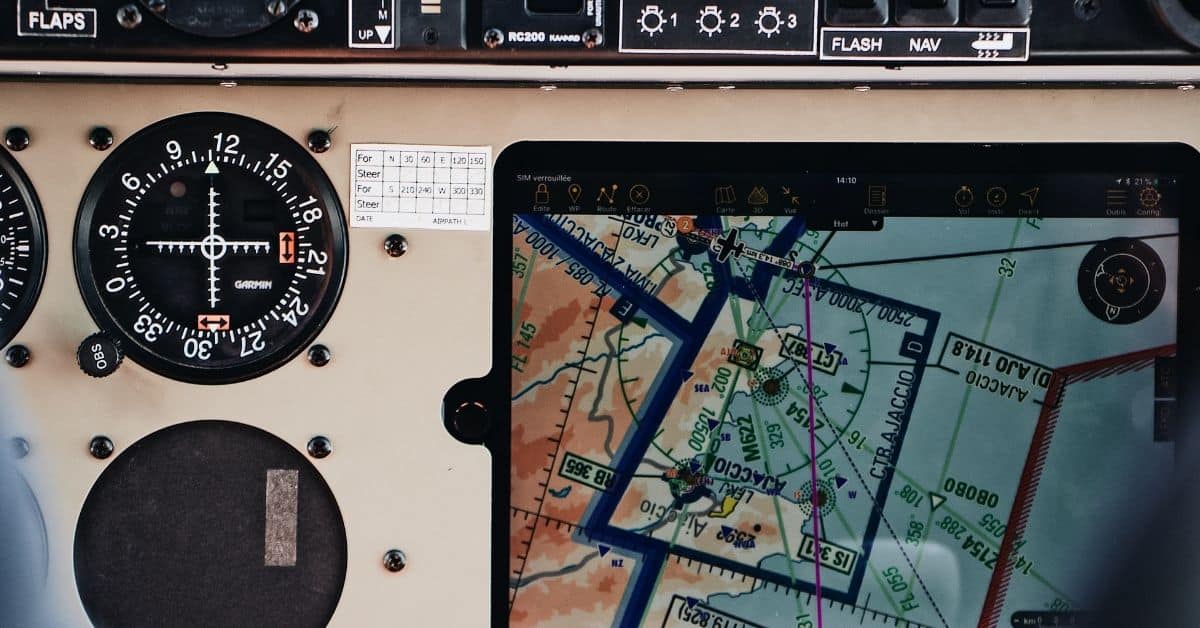During an in-flight incident, there may be a need for the aircraft to land as soon as possible due to an emergency. In this instance, pilots will select an internationally recognized signal on the transponder to communicate this.
This code is 7700 – a code used to indicate an aircraft in a general emergency. This general emergency could be anything from an on-board medical emergency to an aircraft systems and/or component failure.
Typically when an aircraft squawks 7700, this code will be accompanied by the flight crew declaring the nature of the emergency along with their intentions.
“Mayday, Mayday” is used to indicate an emergency which puts the safety of all on board in an imminent life-threatening scenario whilst “Pan, Pan” denotes an urgent situation that is not deemed to be as urgent but requires attention.
Typically, the Mayday call is accepted to represent an in-flight emergency of a critical nature whilst Pan-Pan denotes a situation that is serious yet is not deemed to be critical.
Deciding to state a Mayday or Pan Pan call is decided by the captain of the aircraft, who will assess the level of risk posed to the aircraft before selecting a declaration. A Pan Pan may also be upgraded to a Mayday situation if it is deemed to more appropriately represent the situation.
When an aircraft squawks this emergency code, there are numerous benefits/advantages in doing so. While using this code is never ideal due to the various reasons behind its purpose, it can offer the aircraft squawking 7700 priority for landing as soon as possible.
Priority to Land Ahead of Other Aircraft
When an aircraft squawks 7700 and/or states “Mayday, Mayday!” or “Pan, Pan” on the radios, Air Traffic Control (ATC) is required to give the aircraft priority to land ahead of other air traffic.
This is particularly important in busy airspaces where there are often long holding patterns and arrival times for aircraft. The ability for an aircraft in distress to expedite its landing means the emergency situation can be attended to on the ground more promptly than that of a conventional approach and arrival.
Various shortcuts can be given by ATC to aircraft in this situation. Typically, aircraft are required to fly what is known as a Standard Terminal Arrival Route (STAR) when landing at large commercial airports. In an instance of an aircraft squawking 7700, ATC can grant the aircraft to proceed direct to approach fixes for the selected arrival runway.
Notifies all ATC Services in the Area
When an aircraft squawks 7700, all ATC services in the region are notified of this alert. As ATC is commonly divided into separate services (tower, approach, center, etc), this is advantageous for transparency purposes.
In other words, the aircraft does not have to manually declare an emergency to each ATC service which it transitions through on the arrival to the airport.
From ATC’s perspective, the aircraft will appear on radar screens in a different color/outline to that of other aircraft. This visually indicates and distinguishes the aircraft from the other traffic.
Ability to Select Desired Runway and Approach Pattern
When an aircraft is squawking 7700 and needs to land promptly, ATC may give the flight crew discretion as to what runway they wish to land on. Alternatively, the flight crew may also have the ability to request their desired runway for arrival.
The ability for the flight crew to select their desired runway for arrival is integral due to the calculated landing distance required by the aircraft. Depending on the nature of the emergency, the landing distance required for an aircraft to safely land may differ from the conventional distance.
This is due to the potential for the aircraft landing configuration and/or landing weight to be different from that of a normal approach and arrival.
Aircraft landing configurations will differ based on the pertinent emergency checklists being followed by the flight crew.
If the aircraft needs to burn fuel to achieve the Maximum Landing Weight (MLW) or required landing weight, the flight crew may also request to enter a holding pattern of choice to facilitate the dumping of fuel.
The practice of jettisoning fuel from the aircraft is preferably conducted over water where possible.
As noted previously, an aircraft that is squawking 7700 is never an ideal situation. However, this universal squawk code is a highly effective means of transparently communicating to ATC to state that the flight requires a higher degree of assistance and priority.
Read More:
Is The B787 Dreamliner Safe? – A Complete Analysis

After visiting more than 60 countries, I have probably been on every type of plane there is and visited countless airports. I did my very first international solo trip to South Africa at the age of only 16 and haven’t really stopped traveling since.
Despite the adventurous travel itch, I do have a nerdy side as well – which is satisfied by writing about all things aviation “too boring” for my regular travel blog.
